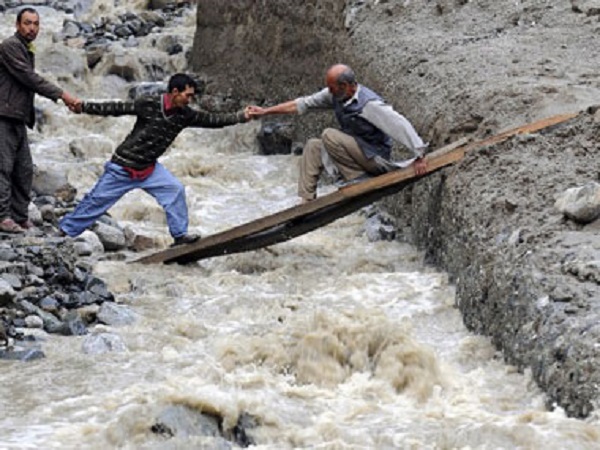More than our work, our workplace colleagues add to most of the stress in office. Here’s how you combat the pressure.
 by Dr Pooja Birwatkar
by Dr Pooja Birwatkar
The other day I was teaching Mc Gregor’s theory X and Y, which states two completely alternative explanations of how people work. One school of thought says people don’t want to work and only work when under coercion, threatened with punishments or shown incentives. It also states that usually, people shun responsibility and only seek security in a job. The other theory states that people not only look forward to but also assume responsibility towards tasks they feel intrinsically motivated to do. So people are not lazy but they need to feel happy about doing something and if that happens, then they do wonders.
Don’t we all follow both these theories at our workplace? Likewise, we also see people of both kinds in our offices. Sometimes we start off by completely following Theory Y, but somewhere down the line, systems at work bug us and slowly we start responding to the system by underperforming or minimally performing. Come to think of it, what is the biggest issue we have at work place that bothers us the most? The job profile, the nature of job as well as other conditions associated with our work, remuneration, duration and travelling time to offices (the biggest problem of Mumbaikars) are all potent factors for both satisfaction, and largely, dissatisfaction. But if we have to name the most threatening factor that really robs us our peace of mind is the PEOPLE at our work place.
The toughest challenge is in the form of human beings – these could be colleagues, supervisors, managers and higher apex authorities. How difficult it gets at times to manage working with people! Ego hassles, dominance, personality differences, moods, feelings, ambitions, self esteem, power displays – all characterise in varying forms the people we work with. We meet all types of people in our work environments and HR principles tell us that we need to have harmonious relations with all of them.
That, of course, is easier said than done.
So what kinds of people do we see at the work place?
The giants. These are people who mostly know everything and are overpowering. They are the ones who maximally use insults, threats to get work done and are basically the ‘terrors’ in our lives.
Bullies. They use all the aggression at their disposal to make you slog.
The pessimistic ones. Whatever you do, they always fail to see the silver lining. Full of negativity and cynicism, they complain about anything and everything.
The keeping-tabs-on-you types. These people account for your every move and their eyes follow you everywhere.
The ‘goody two shoes’ types. These are silent, nice and always around to help, but sometimes their sheer lack of ambition and being too good rubs us the wrong way.
The victims. These people always feel the grass is greener on your side.
The super workers. They have an OCD which makes them work all the time. Their meticulous nature makes the others feel inferior.
The gossipers. These people keep changing sides and let you down when you trust them with your secrets.
The quiet but shrewd types. These willmanipulate people without anyone knowing.
The dependent ones. Thesepeople are extra friendly but always indecisive about everything, and load you with all their work, too.
These are just a few as we meet many more types at work. At times people become so difficult that no matter how hard you try, they somehow manage to draw out the worst in you. At times we confront them openly, and at other times we wage silent mind wars against them. Most of these conflicts leave us feeling sick.
In places like Mumbai, where daily life itself is a constant source of stress, workplace pressures definitely take a big toll on us. All our meditation and yoga goes out the window in the face of dealing with ‘people pressure’. So what do we do? Definitely to change people and situations is not always in our hand and experts tell us that change yourself and you will be happy. Tune to let nothing bother you and take everything in a positive stride. Phew but only if we could do it.
So what does one do?
 Fight it out. But ensure that you can handle the repercussions. Also, your fighting response is a reflection of discomfort and mental anxiety, so you might want to address these first.
Fight it out. But ensure that you can handle the repercussions. Also, your fighting response is a reflection of discomfort and mental anxiety, so you might want to address these first.
Talk it out with people. You will find that sometimes, gossip eases mental tensions.
Hope that the person(s) bothering you disappears. If they don’t, take a break from your desk and vanish for a while with a cup of tea or coffee.
In times of stress, try and summon happy memories. If you have trouble with this, browse pictures of friends and family for a few calming moments.
Be firm when dealing with the source of your stress. It is not worth it if the pressure makes you sick or anxious all the time.
Keep reminding yourself that this too, shall pass.
Dr Pooja Birwatkar is currently pursuing post doctoral research and working in the area of science education. She has been associated with the field of education in the past as a teacher educator, and her area of interest is research in education.
(Pictures courtesy worksmartlivesmart.com, www.rediff.com, work.chron.com)













